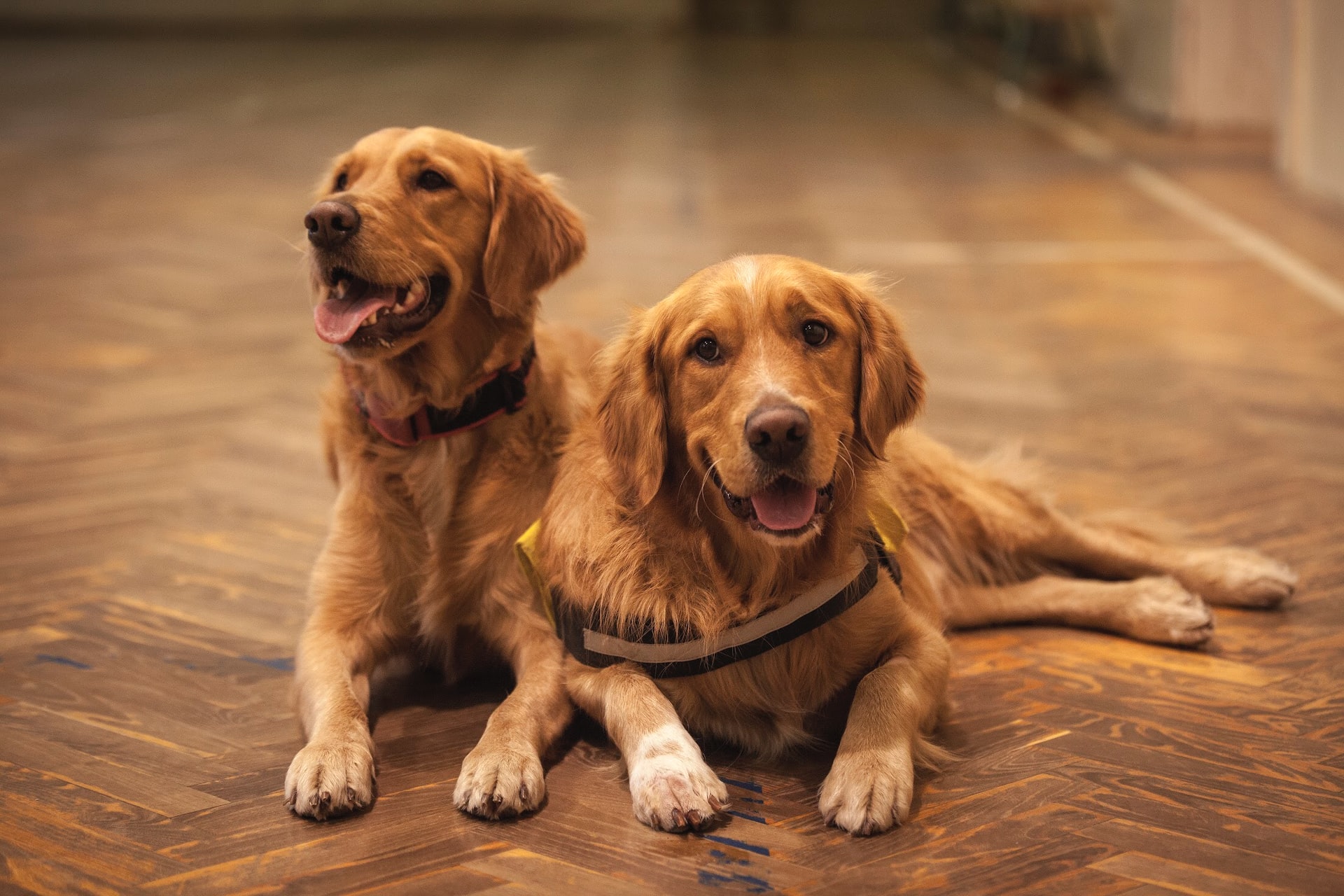We all know that Golden Retriever is extremely popular in the US. But we also know that every dog is unique in its own way. So which dog has an appropriate outlook and which hasn’t and how the proper Golden Retriever should look like? To answer these questions let’s have a look at AKC Golden Retriever standards.
American Kennel Club registered the first Golden Retriever in 1925 and established AKC Golden Retriever standards in 1981 and reapproved them in 1990. Since then they determine how a purebred Golden Retriever should look. So let’s have a look at the general appearance description of a perfect Golden according to AKC.
The general character of the breed is described as active, powerful, well put together and symmetrical dog that possesses a personality that can be described as self-confident, alert and eager. All these characters are best shown in hard-working conditions due to the hunting origin of the canine. Any deviations from this ideal description will be considered a fault if they are in contrary to breed’s purpose or character.
Golden Retriever males are larger than females.
Males are 23-24 inches high at withers and 65-75 pounds. Females are 21.5 -22.5 inches high and 55-65 pounds of weight. The length of the dog from breastbone to the point of buttocks should be in 12 to 11 ratio to the height and withers. Any deviations in height up to one inch shall be penalized respectively and the dogs with deviation of more than one inch shell be disqualified.
The foreface should be deep and wide, skull is broad. The Muzzle is a bit wider at the stop than at the tip, blending strongly and smooth into the skull. Eyes are preferably brown or medium brown, set well apart and reasonably deep in sockets. Medium-large in size with dark rims, they should be intelligent and friendly in expression.
Golden Retrievers should have rather short ears falling close to the cheeks, with front edge attached just above and well behind the eyes. If the ears are handing too much the dog may be penalized. The tip of an ear should just cover an eye when pulled forward. Golden’s nose is brownish black or black. A nose lacking pigmentation or a pink nose will be penalized. However, it is acceptable if the nose is lightly fading in the cold weather.
The rule about teeth is very strict.
The teeth should meet in a scissors bite with the outer side of lover jaw touching the inner side of upper jaw. Both overshot and undershot will cause disqualification. However, overshot and undershot should not be confused with irregular placement (misalignment) or incisors meet each other edge to edge (level bite). Both are undesirable but will not cause disqualification. Also evident gaps between the teeth are a major fault as full dentition is desirable.
Neck of a perfect Golden should be medium-long with no throatiness. Backline should be strong and level no mater the dog is standing or moving. Body should be well-balanced with a well-developed forechest. Tail is think and muscular at the base and well set of. Medium sized feet should be round, well knuckled and compact. And of cause a famous Golden Retriever coat should be dense and water-repellent. The outer coat may be straight or wavy but should be neither too long nor too short. Color is described as rich lustrous golden of various shades. Neither too light nor too dark in not accepted. That is why you can register your purebred White Golden Retriever with AKC but your dog will not be able to take part in competitions in America.
Finally the character of the canine is described as mild and friendly.
Well balanced personality and desire to please its owner is what made this dog so popular. So these characteristics are the indispensible part of general breed description.
Despite the fact that AKC does not really have any formal health standards for member dogs, you are more likely to adopt a high quality pup from AKC members then anywhere else. Membership in AKC gives you access to a community of fellow enthusiast with includes support pack and participation in events organized by the club. The support pack includes guides, ACK medical foundation, canine search-and-rescue etc. AKC membership also allows to participate in AKC events even if you own a purebred without papers.
